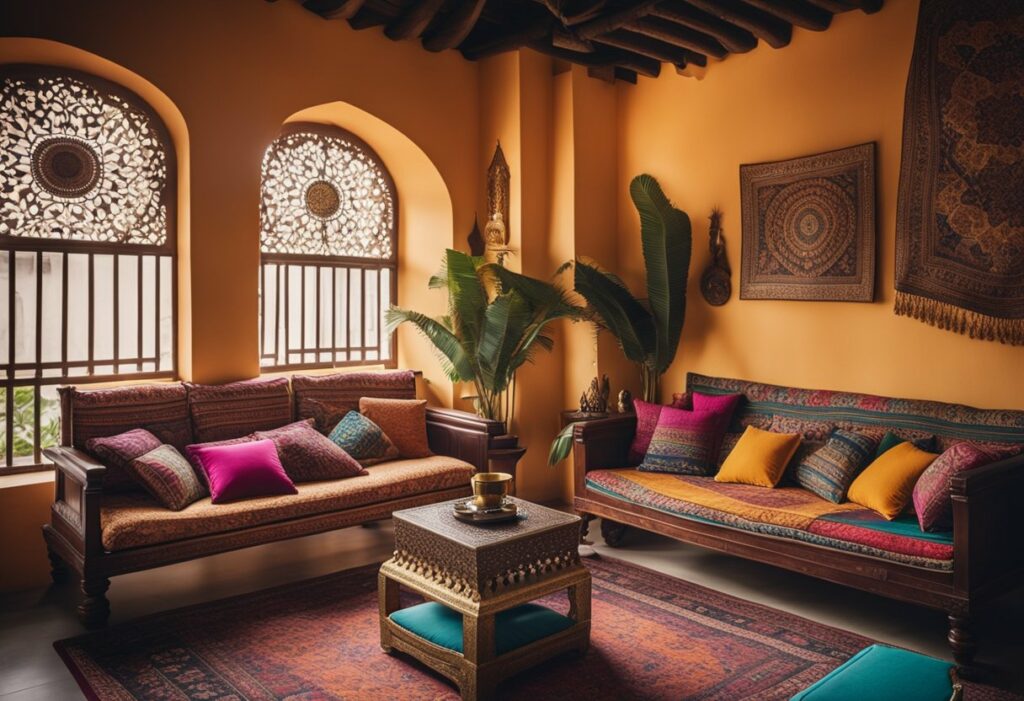Indian Home Interior Design: Tips and Inspiration for a Vibrant and Colourful Home
If you are looking to infuse your home with a sense of warmth, vibrancy, and grandeur, Indian home interior design may be just what you need. India is renowned for its rich culture, and its interior design is no exception. Indian homes are known for their bold colours, intricate patterns, and ornate details that showcase the country’s unique heritage.
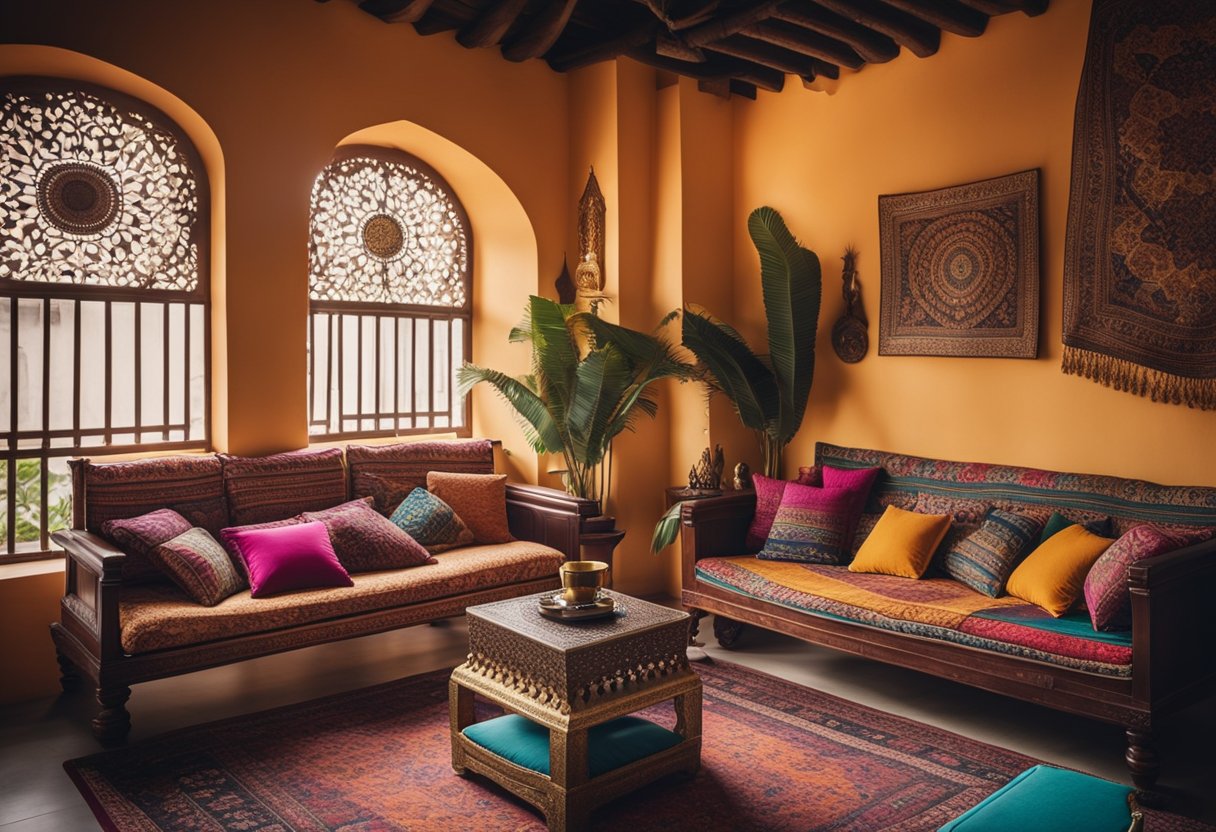
Essentials of Indian Home Interior Design Indian interior design is all about creating a space that is both functional and aesthetically pleasing. To achieve this, designers often incorporate elements such as handcrafted furniture, vibrant textiles, and intricate artwork. The use of natural materials such as wood, stone, and clay is also prevalent in Indian home interiors, adding a sense of warmth and earthiness to the space.
Practical Considerations for Indian Interiors When designing an Indian home interior, it is essential to consider practical considerations such as lighting, ventilation, and storage. Indian homes are known for their love of natural light, so incorporating large windows and skylights can help to bring the outdoors inside. Adequate storage is also crucial in Indian homes, as families often have large collections of textiles, artwork, and other decorative items.
Key Takeaways
- Indian home interior design is all about bold colours, intricate patterns, and ornate details that showcase the country’s unique heritage.
- To achieve an authentic Indian home interior, designers often incorporate handcrafted furniture, vibrant textiles, and natural materials such as wood, stone, and clay.
- Practical considerations such as lighting, ventilation, and storage are also essential when designing an Indian home interior.
Essentials of Indian Home Interior Design
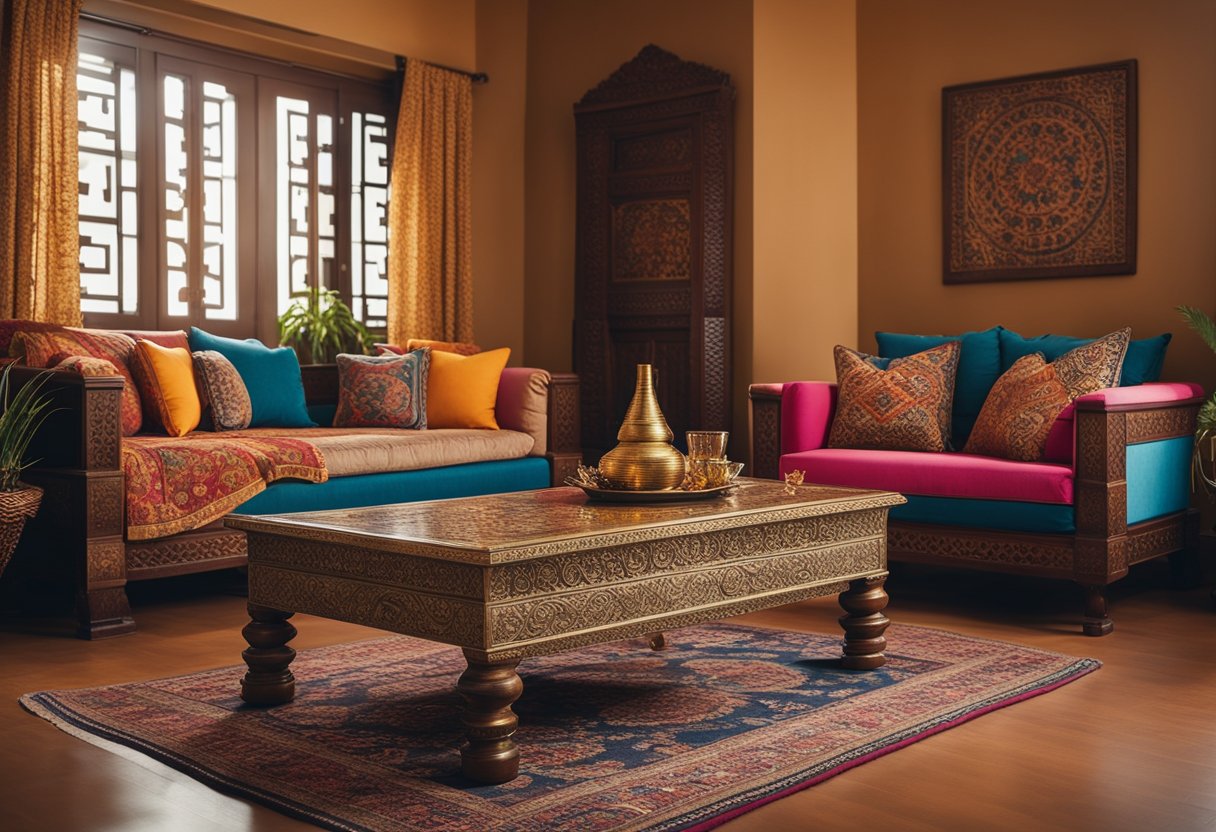
If you’re looking to add a touch of the Indian aesthetic to your home, there are certain elements that are essential to achieving the desired look and feel. Here are some key aspects to consider when designing your Indian home interior.
Incorporating Cultural Motifs and Patterns
Indian interior design is steeped in rich cultural motifs and patterns, which are often used to adorn walls, furniture, and textiles. Popular motifs include Madhubani, Warli, paisley, and mandala, among others. Incorporating these motifs into your design can help create a sense of authenticity and add a unique touch to your space.
Choosing the Right Furniture and Textiles
Furniture plays a crucial role in Indian home interior design. Wood furniture, especially Chettinad furniture and solid wood furniture, is a popular choice. Textiles are also important, with cushion covers and curtains often featuring vibrant colours and intricate patterns.
The Colour Palette and Materials
The colour palette in Indian home interior design is typically vibrant and bright, featuring hues like red, orange, and yellow. Materials like marble, granite, terracotta, and kota stone are also commonly used.
Decorative Elements and Accessories
Decorative elements and accessories like paintings, plants, pots, sculptures, and Indian prints can help add character and personality to your space. Contemporary and modern designs can be fused with traditional elements to create a unique and personalised desi touch.
Creating a Desi Touch in Modern Spaces
Minimalism can be incorporated into Indian home interior design to create a modern and sophisticated look. Adding traditional elements like carvings and inlays to modern furniture can help create a desi touch in modern spaces.
Traditional Spaces and Elements
Pooja rooms are an essential part of Indian homes, and can be designed with intricate carvings and woodwork. Indian art, especially wood carvings, can also be used to add a traditional touch to your space.
Textile Artistry and Craftsmanship
Fabrics like cotton, jute, and silk are commonly used in Indian home interior design, with techniques like dabu, kalamkari, ikat, and bandhej used to create intricate patterns and designs.
Flooring and Floor Coverings
Flooring and floor coverings like carpets, dhurries, mats, and floor cushions can help add texture and depth to your space. Natural elements like plants and floral motifs, as well as animal motifs like elephants, peacocks, and fish, can also be incorporated into your flooring design.
Integrating Natural Elements
Natural elements like plants and foliage can help create a sense of calm and tranquillity in your space. Outdoor spaces like balconies and jungle-themed areas can also be designed to reflect the Indian lifestyle.
Outdoor Spaces and Lifestyle
Outdoor spaces like balconies and gardens can be designed to reflect the Indian lifestyle. Incorporating elements like plants, water features, and seating areas can help create a peaceful and relaxing environment.
Practical Considerations for Indian Interiors
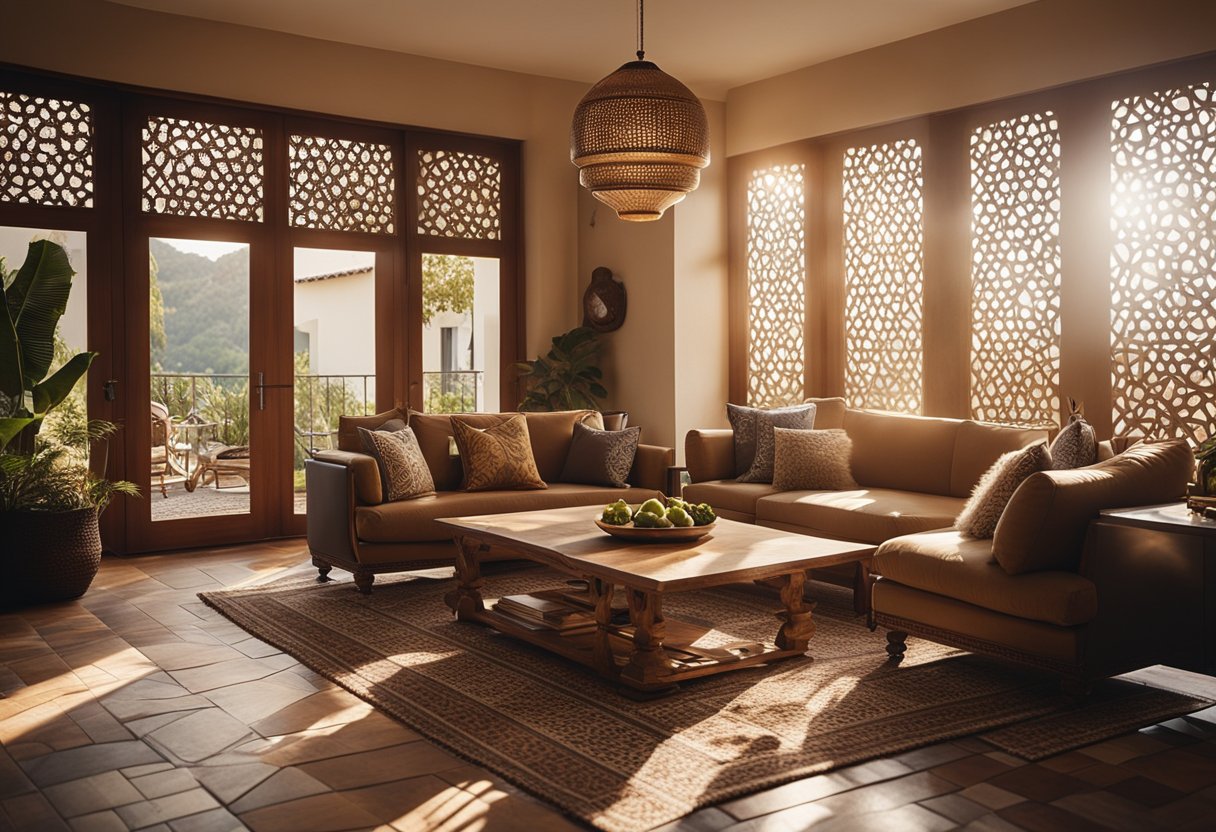
When designing an Indian home, there are several practical considerations to keep in mind to ensure that the space is both functional and beautiful. Here are some tips to help you create a space that is both stylish and practical:
Maximising Space with Smart Design
One of the biggest challenges in Indian homes is space. To make the most of your space, consider using smart design solutions such as built-in storage, multi-functional furniture, and space-saving layouts. For example, you could use a platform bed with built-in storage drawers, or opt for a modular sofa that can be configured in different ways to suit your needs.
Selecting Durable Materials and Furniture
Indian homes are often bustling with activity, so it’s important to choose materials and furniture that can withstand wear and tear. Look for durable materials such as solid wood, marble, and granite, and opt for furniture with sturdy armrests and legs. You should also consider the maintenance requirements of different materials, and choose options that are easy to clean and maintain.
Incorporating Art and Craft Traditions
Indian art and craft traditions are a rich source of inspiration for interior design. Consider incorporating elements such as carvings, sculptures, and paintings into your home decor. You could also use textiles such as cushion covers, curtains, and carpets to add texture and colour to your space. Look for traditional patterns such as Warli, Madhubani, and block prints, or opt for more contemporary designs with Indian prints and motifs.
Understanding the Role of Interior Designers and Architects
Working with an experienced interior designer or architect can help you create a space that is both functional and beautiful. These professionals can help you choose the right materials, furniture, and colours for your space, and can also provide guidance on layout and design. Look for professionals who have experience working with Indian design and who understand the cultural and aesthetic nuances of Indian interiors.
Adapting to Regional Styles and Preferences
Indian design is incredibly diverse, with different regions and cultures having their own unique styles and preferences. When designing your home, consider incorporating elements that are specific to your region or cultural background. For example, you could use Chettinad furniture from Tamil Nadu, or incorporate Rajasthani carvings and inlays. You could also use fabrics such as Dabu, Kalamkari, Ikat, and Bandhej to add a regional touch to your space.
Overall, designing an Indian home requires a careful balance of functionality, style, and cultural sensitivity. By keeping these practical considerations in mind, you can create a space that is both beautiful and functional, while also celebrating the rich cultural heritage of India.
Frequently Asked Questions
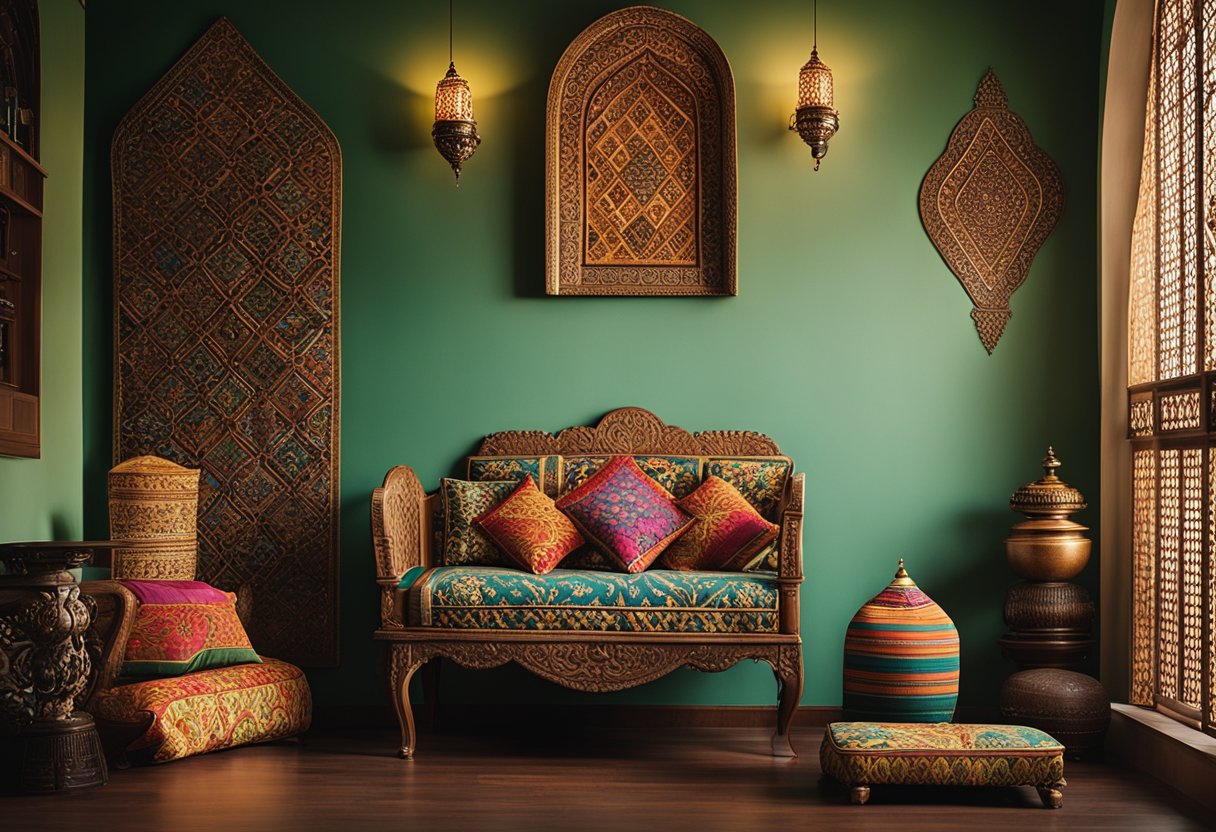
How can I infuse traditional Indian elements into my modern home decor?
If you want to add some Indian elements to your modern home decor, you can start by incorporating traditional Indian patterns and colours. You can also add some Indian-inspired accessories such as brass lamps, colourful cushions, and handcrafted rugs. You can also use traditional Indian fabrics like silk and cotton to add a touch of elegance to your home.
What are the latest trends in Indian style interior design for small homes?
Indian style interior design for small homes is all about maximising space and creating a warm and inviting atmosphere. The latest trends include using natural materials like wood and stone, incorporating bold colours and patterns, and using multi-functional furniture pieces. You can also add some greenery to your home by using indoor plants to create a calming and relaxing atmosphere.
How do I select the perfect colour palette for my Indian home interior?
When selecting a colour palette for your Indian home interior, you should consider using warm and earthy tones like red, orange, and gold. These colours are commonly used in Indian interior design and can add a touch of elegance and warmth to your home. You can also use neutral colours like beige and cream to balance out the bold colours.
Could you suggest some budget-friendly Indian interior decorating ideas?
If you are on a budget, you can still create a beautiful Indian-inspired home interior. You can start by repurposing old furniture and giving it a new lease of life with a fresh coat of paint or some new upholstery. You can also use colourful tapestries and rugs to add some Indian-inspired patterns to your home. You can also add some DIY wall art by using stencils and paint to create your own unique designs.
What are some essential pieces of furniture in a typical Indian home design?
In a typical Indian home design, some essential pieces of furniture include a low seating arrangement like a diwan or a jhoola, a wooden or brass coffee table, and a bookshelf or display cabinet to showcase your collectibles. You can also add some floor cushions and poufs to create a comfortable and relaxed seating area.
Who are some renowned interior designers known for their work in Indian-style homes?
Some renowned interior designers known for their work in Indian-style homes include Sunita Kohli, Ambrish Arora, and Tarun Tahiliani. These designers have created some stunning Indian-inspired interiors that are a perfect blend of traditional and modern elements.

